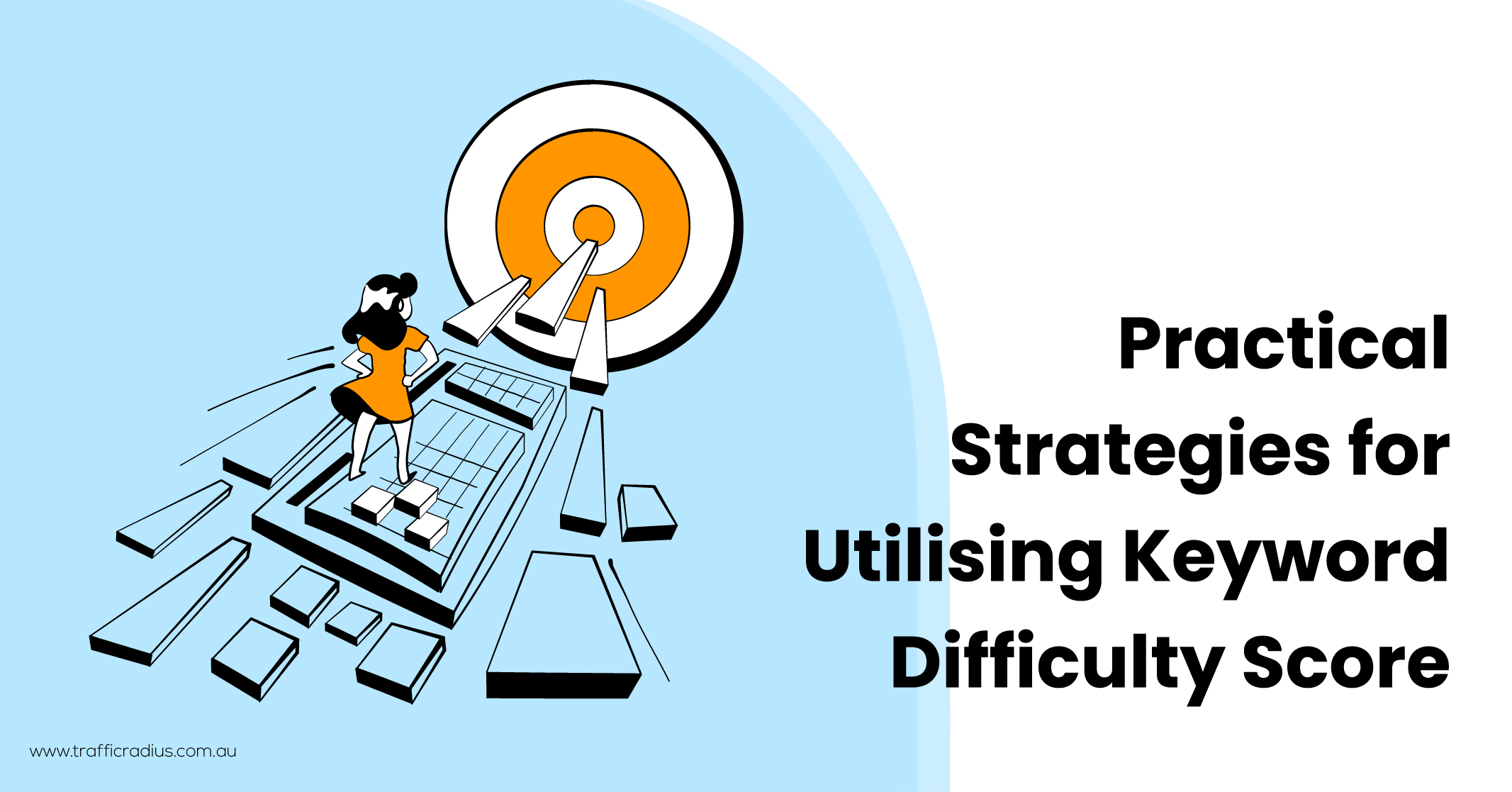Unlock the Potential of Keyword Difficulty with Proven Strategies
What Is Keyword Difficulty?
Keyword difficulty is a crucial metric that gauges the level of effort required to rank your content on Google’s first page. Although it may seem vague, it holds significant importance in the realm of SEO.
Click Here – Free 30-Minute Strategy Session
Be quick! FREE spots are almost gone for this Month
Free Quote
As an SEO professional, you’re likely familiar with the challenges it presents. While it cannot be precisely determined through mathematical calculations alone, experienced practitioners have discovered effective ways to leverage this metric and overcome its inherent ambiguity. These invaluable insights are often not covered in standard SEO courses.
Today, we’ll unveil some strategies related to keyword difficulty in SEO that are known only to accomplished professionals. Additionally, we’ll introduce you to the essential features that will help you establish a sustainable keyword strategy for the long term.
So, let’s begin with- What is a Good Keyword Difficulty?
Determining what qualifies as a good keyword difficulty depends on your unique goals and available resources. In general, a favourable keyword difficulty score falls within a range that aligns with your objectives. Consider the following factors:
- Moderate Difficulty: Keywords with a moderate keyword search difficulty score, typically ranging from 21 to 60, serve as a solid starting point for most businesses. These keywords strike a balance between search volume and competition. While they may require some effort to rank for, implementing effective SEO strategies increases your chances of achieving a favourable position in search engine rankings.
- Targeted Niche: If your business operates within a specific niche or caters to a particular audience, focusing on keywords with lower competition and search volume can be advantageous. These long-tail keywords often have a lower keyword search difficulty score (below 20).
- Industry Benchmark: Another approach is to evaluate keyword difficulty scores relative to your industry benchmark. Conduct research and analyse the keyword difficulty scores of your competitors or top-ranking websites within your industry. Strive to match or surpass their keyword difficulty scores to effectively compete and gain visibility in the search result.
Learn More: Mastering the Fundamentals of Keyword Strategy
The Significance of SEO Keyword Difficulty Rating

As you dive deep into your keyword research, you encounter a multitude of metrics to measure, analyse and interrelate. Among these, keyword difficulty stands out as a metric with vital applications.
Let’s quickly recap its importance:
- Assessing Competition: Keyword difficulty helps evaluate the level of competition in organic search. It enables you to understand the landscape and determine the challenges you may face in ranking for a specific keyword.
- Ranking Potential Analysis: By examining keyword difficulty, you can gauge your chances of achieving a desirable ranking position. It provides insights into the feasibility of attaining a favourable rank based on the competition.
- Estimating Time and Effort: Keyword difficulty assists in estimating the time and effort required to climb the search result ranks. This metric helps you set realistic expectations and allocate resources accordingly.
- Contextualising Traffic Volume: Keyword difficulty adds context to traffic volume. It helps you understand that high search volume alone may not guarantee success if the keyword is highly competitive. By considering keyword difficulty, you can make informed decisions about prioritising keywords.
- Crafting Keyword Strategy: With keyword difficulty as a guiding factor, you can create well-rounded keyword strategies that include a mix of difficulty levels. Balancing high-difficulty and low-difficulty keywords allows for strategic optimisation and maximises the chances of success.
- Identifying Market Gaps: Keyword difficulty allows you to identify market gaps by uncovering keywords with lower competition. This insight helps you focus on untapped opportunities and gain a competitive edge in specific niches.
By comprehending the significance of keyword difficulty, you can enhance your keyword research process and develop a robust SEO strategy that aligns with your goals.
Incorporating Keyword Difficulty into Your Strategy

When we first start working with keyword difficulty, we’re often advised to steer clear of high-difficulty keywords. The focus is on finding relevant low-difficulty keywords that can drive traffic quickly.
However, as we gain experience, we realise it’s not that straightforward. Ignoring high-difficulty keywords entirely is not the solution. To have effective keyword ideas, it’s essential to create a well-balanced mix of keywords with different difficulty levels.
- Although ranking for high-difficulty keywords may take more time and effort, it’s not impossible. While it can take years to reach the first page, achieving that milestone is a significant accomplishment. Therefore, it’s important to start early and develop a long-term plan.
- Incorporating these relevant high-difficulty terms into your keyword strategy has multiple benefits. Rather than focusing solely on individual pages, take a holistic approach. Plan how different pages support each other to build a robust SEO framework.
- Identify high-value, high-difficulty keywords and develop a long-term plan to incorporate them into your content repeatedly. Observe how your content gradually climbs the search engine results page (SERP) ladder, rank by rank. Choose keywords that will remain relevant to your site content over time.
- Many of your initial low-difficulty keywords will be long-tail keywords. Identify the ones with the highest search volume that directly relate to the core keywords. Create content for these various terms, interlink them, and link them back to the core keywords. Over time, you’ll build a comprehensive library of content relevant to the topic and interconnected with the high-difficulty keyword you initially avoided.
By combining high-difficulty keywords with a long-term plan and incorporating relevant long-tail keywords, you can create a robust keyword strategy that maximises your content’s visibility and relevance over time.
Learn More: Importance of Keyword Research
Keyword Difficulty Analysis With Traffic Radius
Within Traffic Radius, you can access the keyword difficulty score through the keyword research tool and the competitive analysis section.
In the keyword research features, such as Keyword Gap, Keyword Generator, and Keyword Overview (keyword analysis), you will find the keyword search difficulty score.
Similarly, in competitive analysis features like Search and Keywords, the keyword difficulty score is available.
- The score ranges from 1 to 100 and is categorised as easy, moderate, or difficult. This structure simplifies the interpretation of the score and facilitates communication with stakeholders who may require clarification.
Here’s a breakdown of the keyword difficulty scoring system:
- Easy – Scores from 1 to 20
Keywords falling within this range have minimal or no competition. Achieving a rank on the search engine results page (SERP) for these keywords typically requires minimal resource investment. Many of your relevant long-tail keywords will fall within this range. However, ensure that there is sufficient traffic associated with these keywords.
- Moderate – Scores from 21 to 80
Ranking for keywords in this range requires some research and optimisation efforts. Although it may seem like a broad score range, no further subcategories are necessary. Consider the specific numeric score within this range when evaluating keywords. Determine if the score is influenced by factors like high domain authority, backlinks, content quality, or a combination thereof. Identify relevant secondary keywords and focus on link building.
- Difficult – Scores from 81 to 100
Keywords within this range typically have the highest traffic potential. However, reaching a high rank on the SERP for these keywords will demand significant time and effort. You may encounter generic terms within this category that hold value but are not exclusive to your industry or business sector.
Practical Strategies for Utilising Keyword Difficulty Score

Let’s explore five hands-on tactics to leverage the keyword difficulty score and make the most out of this valuable metric. We’ll start with the basic approaches and progress to more advanced techniques.
Identify Keyword Difficulty Scores for Competitor Analysis:
In the competitive analysis section, input your closest competitors. Navigate to the keywords section, or in the overview, expand the view of top organic keywords. You’ll find a list of the top traffic-driving keywords, along with their corresponding keyword difficulty scores. Use filters, such as branded or non-branded keywords, specific search engines, or search types, to refine your analysis.
This list provides insights into the difficulty of ranking for the keywords that drive significant traffic to your competitors’ websites. Explore the competitive traffic filter to discover keyword opportunities, losses, wins, and highly competitive keywords.
What To Do?
- A key aspect of a successful keyword strategy is pinpointing keywords that meet specific criteria, including high search volume, relevance to your target audience and low keyword difficulty.
- Eliminate the need for guesswork by using the keyword generator tool to uncover additional opportunities.
- By finding question queries or trending keywords with favourable difficulty scores, you can plan your SEO framework effectively.
- Filter keywords by specific difficulty score range.
- Invest additional effort in your news section by creating regular video content that addresses current cybersecurity issues while simultaneously targeting relevant long-tail keywords.
- If you already have a list of keywords that you’ve targeted before and need to update and optimise your content, evaluating which keywords are worth targeting and which ones to abandon is crucial.
- Use the keyword analysis feature within keyword research to input your predefined list and create a keyword list within the tool. Assess the number of keywords classified as easy, moderate, or difficult.
With this information, you can create a comprehensive report and prioritise keywords for your strategy or optimisation efforts.
Leverage Keyword Difficulty for International SEO:
- The keyword analysis tool with its keyword difficulty score is particularly valuable when expanding into new regions. By comparing keyword difficulties across different geographical areas, you can:
- Determine which countries to target with content development efforts.
- Identify content types that can be easily ranked in specific countries, considering variations in keyword difficulty.
What To Do?
By using the country filter to analyse individual keywords, you can gauge the difficulty of ranking in specific countries and develop a finely tuned international SEO strategy.
By implementing these practical tactics with keyword difficulty scores, you can enhance your keyword research and strategy development, making informed decisions to drive effective SEO outcomes.
Learn More: What Is Focus Keyword?
How Is Keyword Difficulty Calculated?
Calculating keyword difficulty involves analysing multiple factors that contribute to the competitiveness of a keyword in search engine rankings. While the specific calculation methods may vary across different tools and algorithms, the following factors are generally considered:
- Competition Analysis: The number of websites competing for the same keyword is a key factor in determining its difficulty. A higher number of competing pages indicates increased competition and a higher difficulty score.
- Domain Authority: The authority and strength of the websites currently ranking for the keyword are considered. If the top-ranking pages have high domain authority, it suggests a more challenging keyword to rank for.
- Backlinks: The quantity and quality of backlinks pointing to the page ranking for the keyword are analysed. A larger number of backlinks from authoritative websites indicates a more competitive keyword.
- Content Relevance: The relevance and quality of the content on the pages ranking for the keyword are assessed. If the content is highly optimised and aligned with the search intent, it signifies a higher level of difficulty.
- Search Volume: The search volume of a keyword is also considered. Keywords with higher search volumes often have greater competition and therefore, a higher difficulty score.
- On-Page Optimisation: The optimisation level of the pages currently ranking for the keyword is considered. If the pages have well-optimised titles, meta tags, headings, and relevant content, it suggests a higher difficulty in competing with them.
Based on these factors, keyword difficulty scores are calculated, typically using a scale of 1 to 100 or categorised as easy, moderate and difficult. Higher scores or categories indicate a higher level of difficulty in ranking for the keyword.
Overcoming the Fear of Keyword Difficulty: Unveiling the Power of the Metric
Discover how a strategic approach to the keyword difficulty metric dispels any confusion. Embrace the realisation that high-difficulty keywords should not be entirely avoided. Think big and adopt an expert mindset when dealing with keyword difficulty. Transform the metric into a dependable foundation for long-term SEO planning. The key lies in utilising the metric effectively, relying on accurate data to drive your decisions.
Armed with these keyword strategies, there are no more excuses for neglecting high-potential keywords.







LEAVE A REPLY